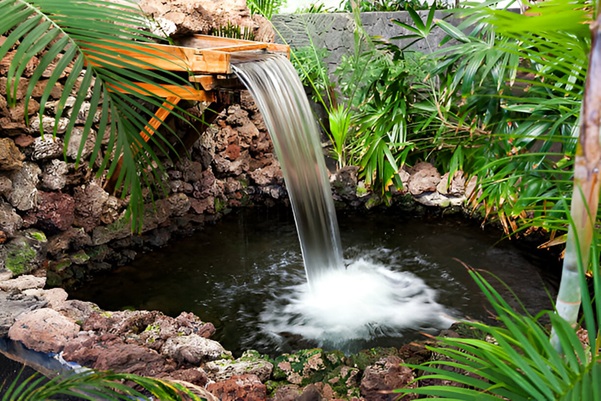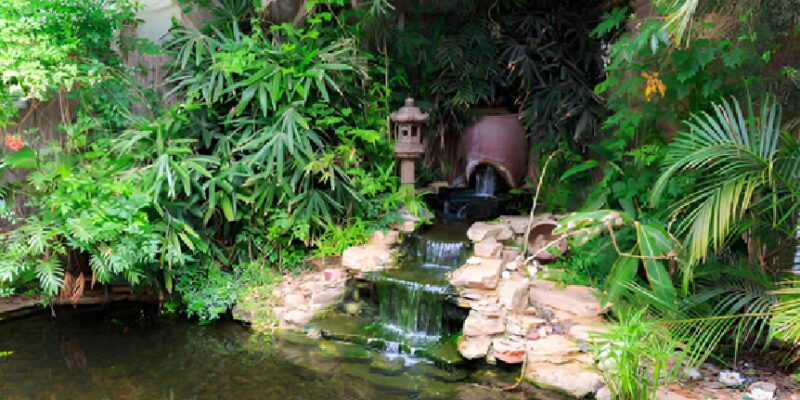Fibreglass ponds remain durable throughout the seasons, but they require little care until bad weather or installation flaws lead to maintenance issues.
Early detection of pond damage before it becomes extensive allows us to prevent expensive repair costs so our pond remains an attractive garden asset for multiple years.
This article provides detailed instructions for fixing different types of fibreglass pond damage.
1. Surface Cracks: Early Signs of Trouble
Surface cracks in pond fibreglass are common, caused by weather, ground movement, or improper installation. Though minor, they can lead to water leakage and structural damage if not addressed promptly.
- DIY Fix: Clean the cracked area thoroughly and apply a marine-grade epoxy or fibreglass repair kit. After the epoxy has set use sandpaper to smooth out the repair site.
- When to Call a Pro: You should seek professional assistance when faced with persistent or severe cracks in order to diagnose the fundamental problem.
2. Discoloration and Staining: More Than Just a Cosmetic Issue
Pond fibreglass may acquire unsightly staining from algae and mineral deposits, which leads to ecosystem damage, although these substances remain harmless to the water.
- DIY Fix: Use pond-safe cleaners or a vinegar solution to remove stains. For algae, consider an algaecide to control growth.
- When to Call a Pro: If stains persist or are accompanied by water quality issues, a professional can conduct water tests and recommend targeted treatments.
3. Water Loss: A Sign of Hidden Leaks
A dropping water level signals a leak, often at seams or damaged areas. Ignoring it risks structural harm and ecosystem damage.
- DIY Fix: Locate the leak before cleaning the affected area while applying underwater epoxy or waterproof sealant to prevent water infiltration.
- When to Call a Pro: Your leak detection needs specialised professional tools when the leak position is too complex or challenging to reach.

4. Irregularities in Shape: Structural Red Flags
Changes in your pond’s shape, such as bulges or depressions, can indicate ground settling, improper installation, or physical damage. These irregularities can compromise the pond’s structural integrity.
- DIY Fix: For minor issues, adjust the surrounding soil to provide better support.
- When to Call a Pro: Significant deformities require professional assessment and repair to restore the pond’s stability and prevent further damage.
5. Unpleasant Odours: A Warning Sign
Foul pond smells stem from stagnant water, bacteria, or decay, harming ambiance and aquatic life.
- DIY Fix: Improve aeration with fountains or air stones, remove debris regularly, and use beneficial bacteria to maintain water quality.
- When to Call a Pro: If odours persist despite DIY efforts, a pond specialist can test the water and recommend solutions to restore balance.
When to Seek Professional Help
While DIY repairs can address minor issues, some problems require professional expertise. Extensive structural damage, complex leaks, or persistent water quality issues are best handled by a pond fibreglass specialist. Professionals offer assessments, repairs, and maintenance for pond perfection.
Final Thoughts
In order to maintain your fibreglass pond’s appearance and functionality, regular inspections combined with swift maintenance are necessary.
Addressing cracks, stains, leaks, and odours early prevents costly fixes and keeps your pond thriving. If damage seems extensive, seek professional help to ensure your aquatic haven stays in top shape.








Comments